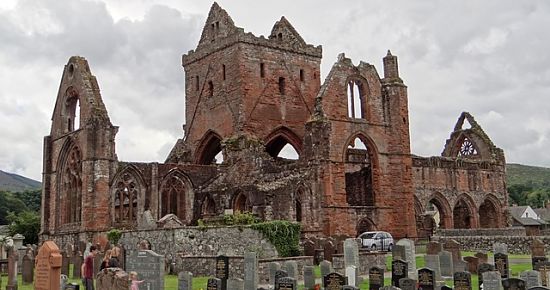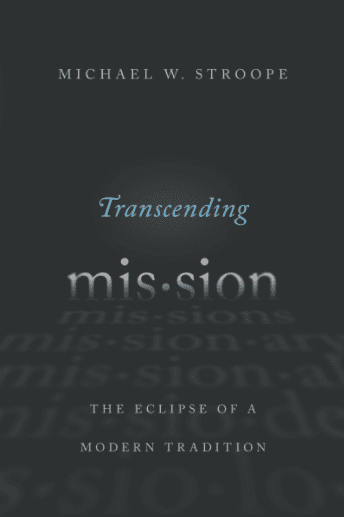That last fifty years or so has seen an area of deep and troubling turbulence in the church, and the turbulence revolves around one question: What is the church? Or, perhaps, Where is the church? From the Jesus movement of the 60s to the spiritual gifts movement under Ray Stedman to the church growth movement and the megachurches to the emerging movement and the liturgical movement and the ancient-future movement to the no church church movement to the organic church movement to the house church movement to post denominationalism … it’s one proposal after another that seeks in one way or another to answer that question. I remember asking Brian McLaren, after he had written Generous Orthodoxy and then Everything Must Change, “What is your ecclesiology now?” and he told me then that he was working on it. I’ve not seen any book of his that seeks to answer that question.
I had hopes the emerging movement would help reform the evangelical’s quest for a more adequate ecclesiology, but alas, it leaned and leaned and never landed — at least for me — on an ecclesiology that is sustainable. Yet, yet, yet … it’s pushes and shoves were fundamentally about ecclesiology.
Which theologian helps most in today’s missional discussion? What are the core ideas — name three — in missional ecclesiology? What happens to the “weekend service” if missional ecclesiology becomes central?
The singular ecclesial movement today that offers promise for the future as a sustainable model for the next generation is the missional ecclesiology movement. Yet, after reading the comments last week in response to Tony Jones’ proposal that homeschooling cuts across the grain of the missional task of the church I became convinced there’s an ongoing fundamental misperception. Here it is: folks, missional is not a fancy, new, pc term for evangelistic. Missional is something else, and something bigger, and something that puts evangelism in its proper place.
 What we need is a good textbook that is theologically conversant so that missional can be given a good solid intellectual context. That book has now been written and I hope this book will become a standard text for colleges and especially seminaries. The book is by Graham Hill, a professor at Morling College in Sydney, and his book is called Salt, Light, and a City: Introducing Missional Ecclesiology. If you want to know the theological conversation, and if you are tried (as I am) of everybody and her brother shooting up missional rockets that will solve our problems, then this book will slow it all down to a genuine conversation with the major theologians and issues. Before I get to a brief sketch of the book’s first section, I want to sketch what the book does:
What we need is a good textbook that is theologically conversant so that missional can be given a good solid intellectual context. That book has now been written and I hope this book will become a standard text for colleges and especially seminaries. The book is by Graham Hill, a professor at Morling College in Sydney, and his book is called Salt, Light, and a City: Introducing Missional Ecclesiology. If you want to know the theological conversation, and if you are tried (as I am) of everybody and her brother shooting up missional rockets that will solve our problems, then this book will slow it all down to a genuine conversation with the major theologians and issues. Before I get to a brief sketch of the book’s first section, I want to sketch what the book does:
First, a brief survey of ecclesiology in the current discussion: Roman Catholic (Benedict XVI, Rahner, Küng), Orthodoxy (Hopko, Guroian, Zizioulas), Protestant (Russell, Moltmann, Webster), and Free Church (Yoder, Harvey, Volf). Then, second, Hill introduces missional ecclesiology through discussion with the above. (Volume two will take into consideration the Two Thirds World theologians.)
The whole debate, once again, comes down to the same question: What is the church? Church growth advocates tend to see the church as evangelistic station, while Bible churches tend to see it as theological/Bible center or education center, some in the progressive tradition see it as caucas for justice, while some liturgical groups see an aesthetic worship center. So how do these three Catholic theologians answer that question? And, to be observed, What does each’s distinguishing ideas mean for a missional ecclesiology?
Ratzinger/Benedict XVI: the church is the place of communion with the Trinity and humans focused in eucharist with genuine ecclesial structures in place. Other themes: people enter the church through faith and baptism and the eucharist sustains them. The Pope thinks Protestants have wounded apostolic succession and the communion.
Rahner: the church is the community of witness, again in fellowship with the Bishop of Rome. Rahner also has his famous idea of the “anonymous Christian,” an expression that is about as up for grabs as Bonhoeffer’s “religionless Christianity.” Here the church becomes the sacrament of God’s salvation in this world. But notable for Rahner is his emphasis on lay/clergy perception: he’s not into hierarchy but into a reciprocal relationship of charismatic giftedness.
Küng: the church is the eschatological community of salvation, with special emphasis on the church as Spirit-shaped and charismatic center of gifts for the world. For Küng the big idea is the eschatological one: Jesus preached that time had entered a new phase, the old was fulfilled and the kingdom was inaugurated and the future was taking shape in the now. The church then is an eschatological community of salvation. Again, with Rahner, Küng pushed against Ratzinger/Benedict XVI on charismatic gifts and hierarchical reifications. He wanted an “evangelical catholicity,” though he sustained connection to Rome. The church has a diaconal not hierarchical structure.











